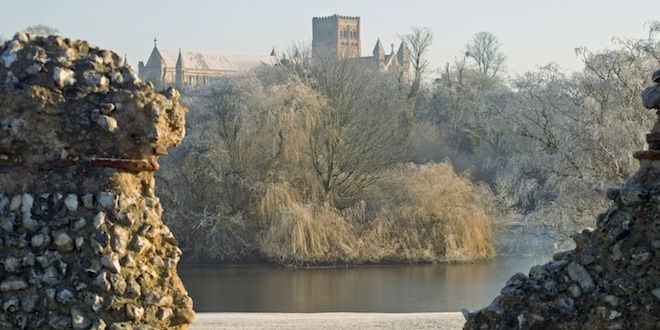St Albans Historical Landmarks:

(Photo: Source)
St Albans’ origin goes all way back to the Celtic (Iron Age) when it was called ‘Verulamium’. Yes, it is not Roman but a Celtic name which means ‘settlement over or by the marsh’. Today, St Albans is home to excellent football, luxurious hotels, unrivalled restaurants and much more. There’s a significant percentage of locals and tourists who visit St Albans just to explore the historical landmarks situated in it.
So, here are top 5 St Albans historical landmarks that you must see while in St Albans, Hertfordshire, United Kingdom.
- Roman Wall of St Albans – Abbey Mill Ln, St Albans AL3 4BL, UK
Built somewhere between 265 AD and 270 AD – The Roman Wall of St Albans was said to built for protection. During that time, tribes used to attack nearby settlements to conquer and expand their region of influence. The Roman built this wall to defend the Roman City of Verulamium. However, most of the wall is destroyed, there’s still a portion left to witness the structure of the wall.
- Roman Theatre of Verulamium – Bluehouse Hill, St Albans AL3 6AE, UK
The Roman City of Verulamium was the second-largest Roman Britain Town (at some sources it is third-largest). Imagine an entire civilization that once ruled the St Albans, have become ruins. Amongst it is the Roman Theatre of Verulamium. It was said to be erected in 140 AD, Romans was famous for its culture, strategic mindsets, and entertainment. According to historians, Roman Theatre of Verulamium was a setting place many acts, performances, and sometimes fights.
- Roman Mosaic and Hypocaust – St Albans AL3 4SN, UK
Romans were addicted to scenic interiors which why they had created astonishing mosaic floors. The Roman hypocaust is a perfect example of marvellous Roman engineering, it was a heating system for walls and floors (beneath). Sir Mortimer & Tessa Wheeler unearthed the Roman Mosaic and Hypocaust in 1930s excavation.
- Lee House (Sopwell Nunnery) – 4 Sadleir Rd, St Albans AL1 2BN, UK
Dating back to 1140 – The Lee House also called ‘Sopwell Nunnery or Sopwell Priory’. It was one of the prominent religious houses (Catholic Christians) during the 12th century. Amongst its attractions, the structure is what astonishes the visitors. A little do people know that Sopwell priory was founded as a St Albans Abbey cell and no one really knows concrete seasons behind its dissolution in the 16th century.
- Old Gorhambury House – A414, St Albans AL3 6AH, UK
Built between 1563 to 1568 by Sr Nicholas Bacon – The Old Gorhambury House is an abandoned Royal mansion (Elizabethan Mansion). It was not entirely a residential place, but Queen Elizabeth I used to visit and stay at the Old Gorhambury House. Today, you can visit the ruins of Old Gorhambury House to witness how beautifully it was constructed.

Comments are closed.